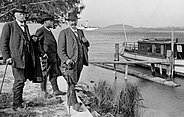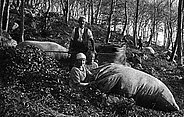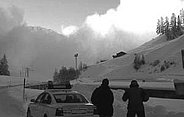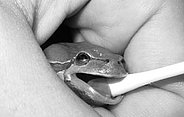When the Central Station for Experimental Forestry was founded in Zurich and later the Snow Laboratory in Davos, their focus was on forest management, hydrology and snow research. Today, our research covers a wide range of themes and habitats.





The two original institutes merged to form the modern environmental research institute, WSL, which today has five main locations and many thousands of research sites throughout Switzerland. With our regional bases and range of themes, WSL has been able to develop basic principles for the sustainable use and development of our environment and, at the same time, conduct internationally oriented research.
In the footsteps of the pioneers
Those who have visited the WSL in Birmensdorf will be familiar with the Flury and Engler auditoriums. Both are named after pioneers in forest research, who were directors of the Federal Institute for Forest Research EAFV. For both Flury and Engler, it was clear that the purpose of their research was not only to obtain theoretical insights but also to provide society with answers to urgent questions.
Forest and snow – the original topics
From the beginning there were many questions: For years the forest had provided fuel wood and timber, leaf litter and pastures, but in the 1850s deforestation reached its height. The question was then how to restore the forest so that it could provide goods sustainably and protection against natural hazards? Forest management, forest protection and the protective function of the forest against flooding were, therefore, the key topics for the Central Station for Experimental Forestry when it was founded in 1885. At the time a handful of researchers were temporarily accommodated in the Federal Polytechnic (now the ETH) in Zurich and given the task of “creating a secure basis for all aspects of forest management”..
When the Avalanche Research Commission was founded in 1931 and the first snow laboratory was built on the Weissfluhjoch in 1936, they were intended to solve concrete problems. With the start of mass tourism, ski slopes and traffic routes had to be made safe and protected against avalanches. Moreover, the electrification of the Swiss railroads depended on the availability of reliable hydroelectric power. More, therefore, needed to be known about avalanches and snow. In 1945, a few years after its foundation, the Federal Institute for Snow and Avalanche Research Weissfluhjoch-Davos, took over the responsibility for avalanche warning from the Swiss Army, which had, until then, been responsible. Today the core subject of the SLF is still snow, not only as a hazard but now also as an endangered resource.
Society and the environment – a new thematic spectrum
The scope of research at both institutes expanded after the second World War. In 1948, the EAFV Director, Hans Burger, noted that, “with nearly every attempt to clarify a question, a whole series of new mysteries come to the surface”. WSL was constantly confronted with queries arising from changing conditions in forestry, society and the environment, for which it developed scientifically sound solutions. Thus, in the 1970s, landscape research became established, especially after 1976, when the Swiss mire inventory began. With increasing air pollution, more needed to be found out about its effects. Here WSL was able to make substantial contributions and has, since then, compiled basic principles for dealing with anthropogenic environmental impacts. WSL’s tasks also include a focus on biodiversity, the sustainable management of natural resources and protection against natural hazards.
Firmly established both regionally and in the field
Not only have the research topics and methods of the WSL become more diverse over the years but also the presence of the researchers in different regions has increased. In 1888, the first research sites were set up to study the yield of the Swiss forests. By 1896, there were already 459 such sites. Today, the total number of research sites amounts to more than 6000. New WSL centres were opened in Bellinzona and at the EPFL in 1991, and in Sion in 1995, to promote local synergies and dialogue with those working in the field.
Today WSL is a nationally and internationally recognised, multifaceted environmental research institute, which has come a long way from the rather narrow thematic focus of the early years with pioneers such as Engler and Flury. This success would not have been possible without the outstanding research of generations of visionary researchers, committed to taking into account the needs of society and the environment. Thanks to their efforts, WSL can continue in future to provide a basis for dealing responsibly with our environment.
WSL Directorate since 1887 ¶
1887-1896 | Anton Bühler |
1897-1901 | Conrad Bourgeois |
1902-1923 | Arnold Engler |
1924-1925 | Philipp Flury |
1925-1933 | Henri Badoux |
1934-1954 | Hans Burger (first full-time director) |
1955-1968 | Albert Kurt |
1969-1986 | Walter Bosshard |
1986-1996 | Rodolphe Schläpfer |
1996-1998 | Walter Ammann (ai) |
1998-2004 | Mario Broggi |
2004-2004 | Jakob Roost |
2007-2012 | James Kirchner |
2012-2020 | Konrad Steffen |
2020-2021 | Christoph Hegg (ai) |
2021-2023 | Beate Jessel |
2023-2024 | Christoph Hegg (ai) |
Since 2024 | Rolf Holderegger |
